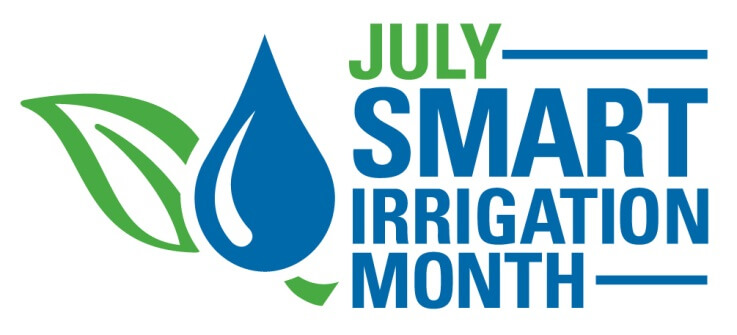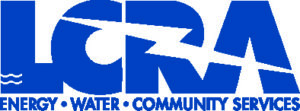Watering Rules are in Effect Year Round
The City’s Water Conservation and Drought Contingency Plans were updated as of June 13, 2024. As part of these updates, Round Rock implemented year-round water use rules. These rules will be in place when no specific drought stage is in effect.
Year round water use standards apply to all Round Rock water customers, including several Municipal Utility Districts (MUDs) outside the City limits. View the Round Rock Water Service Area Map.
Outdoor watering is allowed two days per week based on the Watering Schedule and must occur before 10:00 a.m. or after 7:00 p.m. See schedule here.
PLEASE NOTE: If you are installing new landscaping and plan to water it more than twice per week, apply for a New Landscape Irrigation Variance, found here.
Landscaping
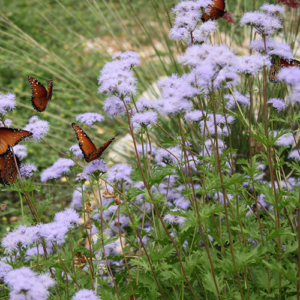
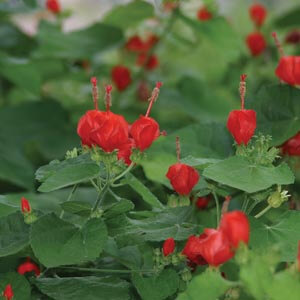
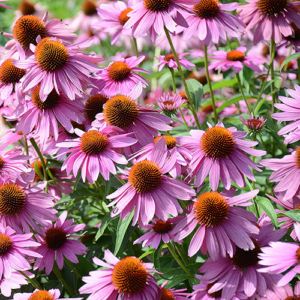
Landscaping Do's and Don'ts
When thinking of adding new plants to your yard, think native. Natives are better acclimated to our weather conditions, soil conditions, and wildlife.
Below are some of the best resources for online plant databases for our area.
- Aggie Horticulture provides a host of expertise on landscape plants, ornamentals, turfgrass, and gardens.
- Aggie Turf website has research on native turfgrasses.
- City of Austin’s Grow Green program includes a searchable database of native and adaptive plants, which includes pictures.
- The Williamson County Master Gardeners hold monthly “Green Thumbs Up” classes at local libraries and have a demonstration garden that can be visited for ideas.
- Williamson County Native Plant Society holds monthly meetings that are open to the public, as well has a wealth of information on their website.
- The Lady Bird Johnson Wildflower Center has a fantastic searchable database.
- Native American Seed Company is a great resource for native grass seeds, as well as wildflower seeds.
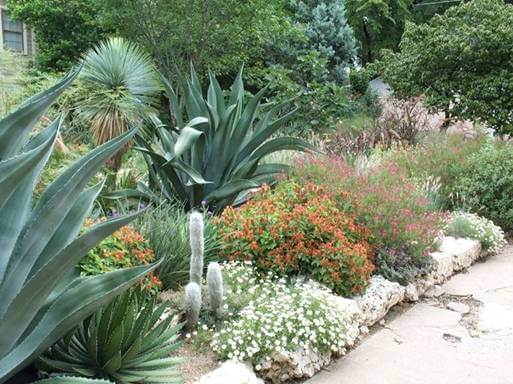
Are you interested in removing some of the grass (turf) from your yard and converting it to native plant beds? Excellent idea!
The City has a new rebate program to assist with the costs of the yard conversion within a parkway strip area. Find details on the rebates page.
The program requires pre-approval.
Are you interested in reducing your water use by removing your lawn and installing artificial turf? The city doesn’t recommend that — there’s just too many benefits to having a living yard, versus a plastic one.
Cons:
- Does not increase plant, animal and insect biodiversity as natural landscapes can.
- Increases urban heat island effects due to high surface temperatures, which may
have negative impacts on recreational use, human health, and the health of
nearby plants and trees. Temperatures can reach up to 80 degrees higher than ambient air temperature. Water may be needed to cool surfaces down before use. - Must be replaced periodically, with used artificial turf often going to landfills due
to low availability and the cost of recycling solutions. Life span is approximately 8-10 years. - May contain chemicals of concern, such as carcinogens, VOCs, and PFAS. Recycled tires are often used as the “infill” on turf installations.
- Can generate microplastic contamination when rain carries the rubber infill to nearby water bodies.
- May adversely impact soil health and groundwater infiltration. Water runs off the property rather than soaking in due to the highly compacted soil under the artificial turf.
- Potential for pet waste build up and odors; washing or spraying off routinely with water is necessary.
- Can increase stormwater runoff.
Pros:
- Potential to reduce fertilizer and mower use, pesticide application, and related
pollution. - Can be a durable, low-maintenance surface for athletics and spaces with high foot
traffic.
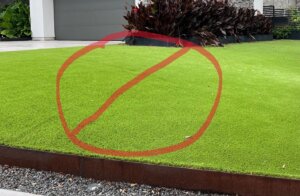
Do you water before a freeze is expected or not?
Local plant experts say yes. Water perennials and new trees before freezes to help insulate the plant. The water fills up the soil and the soil temperatures will keep the plant roots warm. Watering is not needed for turfgrass, as it’s dormant in winter and it’s not the growing season.
Keep water low when watering in winter. Do not spray leaves, buds, or flowers (they don’t need the water anyway). Just water the root zones.
- Williamson
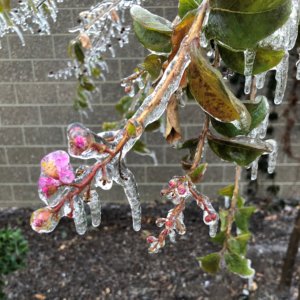 County AgriLife Extension Office gave a great Winter Storm Recovery presentation on assessing trees, perennials, and the irrigation system after a freeze. Find the recorded webinar and other helpful information here.
County AgriLife Extension Office gave a great Winter Storm Recovery presentation on assessing trees, perennials, and the irrigation system after a freeze. Find the recorded webinar and other helpful information here. - Howard Garrett (aka The Dirt Doctor) has a very good article called Responding to Freeze Damage that focus’s on trees and woody plants. Find that here.
- Don’t Cut Grass Too Short! With the lawnmower set higher, the longer grass can help shade the ground, hold moisture longer and help to fight off heat. Longer grass blades are also necessary in shadier spots, as a greater surface area allows for better photosynthesis, which means more energy and food for the plant!
- Don’t cut more than 1/3 of the leaf blade off at a time.
- Ideal heights for grasses are: St. Augustine grass 2.5-5″, Bermuda 1.5-4″, Zoysia (coarse-textured) 1.5-4″ and Buffalo 2″ to unmowed.
- Reuse Grass Clippings; Leaving the grass clippings on the ground can serve as mulch and fertilizer all-in-one. And it’s free!

- Use mulch wherever possible around trees, in shrub beds, even potted plants, mulching to a depth of 3-6″.
- You do not want to mulch to be mounded next to the trunk of the plant, often called “volcano mulching.” It should be more saucer shaped so water will not run off or away from the plant. A flat mat of mulch allows the water to sink in.
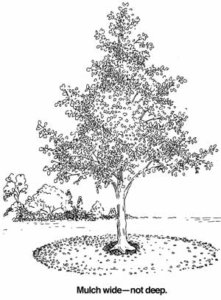
- Since mulch breaks down, it should be applied annually.
- City of Round Rock water customers can pick up free mulch at our Brush Recycling Center. Be sure to take a copy of your water bill with you when you go!
- Mulch also prevents weed growth, retains water, and insulates the soil and plant during cooler months.
- See our video about proper use of mulch.
- Overseeding with rye, or other cool season grass, is discouraged, due to the increased water use and the additional stress it places on the warm-season grass.
- These grasses tend to compete with your warm season grass for nutrients in the soil. This weakens the warm season grass (St. Augustine, bermuda, etc.) which may then require fertilizing and additional watering.
Thinking of switching to a rock yard to reduce water use? Before you do, read this blog we wrote.
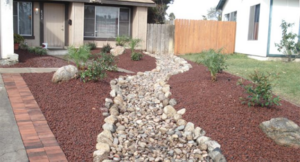
- Rocks generate heat. They absorb the sun’s radiation and hold onto it far into the night. Rocks can reach 140-170 degrees in summer!
- Rocks increase stormwater runoff. Rocks are impermeable, and in large areas, this means water flows off the rock into streets, potentially causing flooding, rather than soaking into the ground (where we want it).
- Rocks increase soil erosion. Since rocks don’t have roots, they will not hold down the soil during rainstorms. This increases erosion on your precious soils.
- They offer no nutritional value. Rocks aren’t the food source of any bird, plant, or insect. They also don’t provide any carbon, the gasoline of the soil ecosystem. Without carbon, those important soil fauna will suffer and die.
- Rocks are not maintenance free. Rocks may still need to be maintained, have weed growth, and need to be cleaned from debris.
If you still choose to install rock, use it in shady areas, and as accents, rather than the whole area.
Soil is really the backbone of your yard. It plays a huge role in survivability of your plants. Healthy soil full of beneficial fungi, bacteria, and organisms is the goal!
What type of soil do you have and how deep is it? These are two main things you need to know about your yard, before irrigating or planting. There’s no point in watering, if you don’t have any soil to hold the water in.
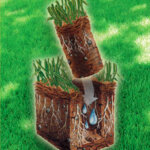
If the soil is too compacted to absorb water, aerate! Loosing the soil, thru core aeration, allows space for water, air, and plant roots to penetrate. This helps promote a healthy lawn. Rebates are available for this service.
Get a soil test (see below) to determine if you really need to add any fertilizers to the yard. Reducing chemical use outdoors helps protect water sources and beneficial insects.
- GardenVille–makes their own soil, mulch, and compost. Nearest location is Georgetown.
- Texas A&M AgriLife Extension provides research and expertise on soils, landscaping, and gardening among other topics.
Irrigation
Over-watering results in shallow roots and encourages weeds, disease, and fungus growth! Yikes! Also, did you know that the more you water your lawn, the more it becomes dependent on that water?
Automatic Irrigation Systems
Typical irrigation systems use between 500 – 5,000+ gallons of water with each use!
This large range is based on yard size, soil type, water pressure, type of sprinkler heads, and run-time (to name a few!). This makes it difficult to provide a one size fits all answer for how much water it takes to water your yard.
We do have help for you! Check out the Water My Yard program (below) or schedule a free irrigation check, where our conservation staff come over to your home to provide watering advice.
Best Practices when Watering
Ever wonder “When should I water my yard?” or “How long do I run each zone?”
The City has partnered with LCRA and Texas A&M AgriLife Extension to help answer those questions! The Water My Yard program will provide recommendations on how long to run irrigation systems efficiently, while maintaining healthy lawns.
The program uses your property address, specific irrigation system information that you’ll input, and local weather data to recommend irrigation runtimes. Fill out the online form to receive weekly email or text messages about watering recommendations.
To start, visit WaterMyYard.org or download the app. You will need to answer questions about your specific irrigation system and landscape.
Water My Yard can be accessed online at WaterMyYard.org or via the free phone app. There is no charge for this service; however it is only available for City of Round Rock residents.
- Check for available irrigation rebates from the City and LCRA.
- Get the most out of your system – schedule a Free Irrigation System Evaluation or use these instructions.
- Use multiple start times, also called cycle and soak. Our clay soils cannot absorb water quickly. Learn how to set up your controller start times here.
- Schedule watering for each zone separately – remember shady areas can run for shorter times than full sun areas.
- Turn off tree bubblers after 2 years from planting a new tree. You don’t want the tree dependent on your irrigation to live. It needs to spread it’s roots.
- Turn system off prior to a rain event. Leave off for several days if more than 1/2 an inch of rain.
- Consider WaterSense labeled weather or soil moisture sensor-based controllers that automatically adjust the watering schedule based on weather or soil moisture conditions. The City’s Irrigation Rebate covers half the cost – check eligibility.
- Follow these water tips and irrigation schedules to help lower your water bill.
Are you a new homeowner in Round Rock*? Have an irrigation system for the first time? Confused by it all?
City water conservation staff can come over to show (and teach) you about certain water features of your new home, such as:
- location of your water meter;
- location of homeowner water shut-off;
- the home irrigation system (sprinklers) components and how to use the irrigation controller;
- minor landscape issues (type of soil, grass, native plants); and
- determine how many gallons are used with your current watering schedule;
- provide a recommended watering schedule;
- make recommendations if any system upgrades are needed;
- potentially more!
Please note staff will not make repairs.
*You must be a direct water customer of the City of Round Rock to qualify for this visit. If you’re a direct City water customer (sorry, MUD customers are not eligible), schedule a free irrigation system evaluation by contacting the conservation team via email or at 512-671-2872.
The most common irrigation controller types are Hunter (Pro-C, X-Core) or Rain Bird ESP series. Need help setting up one of these? 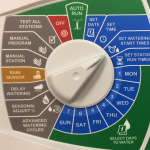 Follow my instructions:
Follow my instructions:
Do you have a leak in your irrigation system, or think you do?
- Check your water meter to see if there is continuous flow through the meter. Where’s your water meter? Learn here.
- To determine if the leak is in the irrigation system or on the house water line, watch the video below to learn where and how to turn off water to the system at your backflow prevention device.
- Once the backflow is turned off, look at the water meter again. If the flow has stopped then the leak is part of the irrigation system. (If the meter is still showing flow, the leak is on the mainline going to your house. The leak could be underground on the mainline or inside the home.)
- Time to call a Licensed Irrigator.
Landscape can (and should) tolerate some stress, this helps build up its drought tolerance.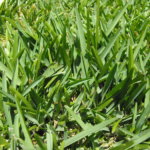
An easy way to see if your lawn needs water is to look at it first thing in the morning. If the grass blade is tall, straight, and the leaf is open, like in the picture to the right, then no water is needed.
- Early morning irrigation is better, because
- you can judge if your plants actually need the water (is the leaf wilted or not) and
- if over-irrigation occurs, the water won’t sit on the plant leave for long. It will be dried when the sun rises. Leaves left sitting in water in cooler overnight temperatures are more prone to diseases.
- Don’t water during the heat of the day. Water before 10 a.m. or after 7 p.m. Evaporation losses are up to 60% higher during the heat of the day. And water applied during extreme heat could burn the plant leaf.
- Avoid watering on windy days as most of the water will be blown elsewhere. Wind speeds tend to be lower when the sun is down–another reason to water at night.
Irrigation use should be adjusted seasonally. Don’t just set it and forget it. This is one major reason why irrigation systems can be wasteful. Remember, irrigation is meant to supplement rainfall, so pay attention to rainfall amounts.
- Summer – no more than twice per week, if needed. Watering too often creates a landscape that becomes dependent on your irrigation. Less frequently is better, as plant roots must grow to search for water.
- Spring/Fall – every 10-14 days if no rainfall has occurred.
- Winter – only water in a drought situation. Winter is not a growing season, plants are dormant, so usually no additional water is needed.
- Water grass to a depth of 4-6″, this allows roots to grow deeper which increases its drought tolerance.
- It only takes 1/2″ of water to penetrate to this depth. To determine how long it takes to water 1/2″ watch this video.
- Water using a cycle and soak method. Run irrigation for half the time you’d normally water (i.e. run sprinkler for 15 minutes rather than 30 minutes) and allow it to soak in for 1 or more hours. Then turn on again to water the additional 15 minutes. This helps prevent water running off the property and has allowed it to soak down into deeper layers of the soil to promote deeper root growth.
- Use the Water My Yard app to get specific watering advice for your yard.
- Drip or soaker hoses or individual spray emitters are ideal for keeping water close to the roots, rather than spraying into the air and on the leaves.
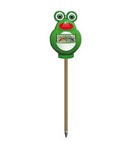
moisture meter - A soil moisture meter or long screwdriver can be used to determine how dry soil is in flowerpots, garden beds. Push the tool into the ground (if you can!) and feel how wet the soil is. Ideally you should be able to push it 6-inches deep.
- A hose timer can be used on your garden hose to set how long you want it to run. When the time ends, the hose timer stops water from coming out of the hose, however, you’ll still need to turn the water off at the spigot.
- A rain gauge is ideal to see how much rain your property receives during a rain event. If you’ve received 1/4-inch or more, no need to water for the week.
YouTube Video below: Round Rock conservation coordinator, Jessica Woods, shows you how to find your irrigation backflow prevention device and turn it off.
Stage 1 Restrictions have been enacted since June 29, 2022. In Stage 1, outdoor watering is allowed two days per week based on the last digit of your address and must occur BEFORE 10:00 a.m. or AFTER 7:00 p.m.
The watering days are based on the last number of your address and are spread out over seven days to balance water usage throughout the week.
The best time to water is early morning, before the sun rises.
Outdoor Watering Schedule | ||
|---|---|---|
| Address Ends in | Stage 1 Twice per Week | Stage 2 Once per Week |
| 0 | Monday / Thursday | Thursday |
| 1 | Wednesday / Saturday | Wednesday |
| 2 | Tuesday / Friday | Tuesday |
| 3 | Monday / Thursday | Monday |
| 4 or 8 | Sunday / Thursday | Sunday |
| 5 or 9 | Wednesday / Saturday | Saturday |
| 6 or 7 | Tuesday / Friday | Friday |
Drought Stages:
- Stage 1 – Watering is allowed on TWO designated days and must occur before 10 a.m. or after 7 p.m.
- Stage 2 – Watering is allowed on ONE designated day and must occur before 10 a.m. or after 7 p.m.
- Stage 3 – Only hand-held watering allowed.

